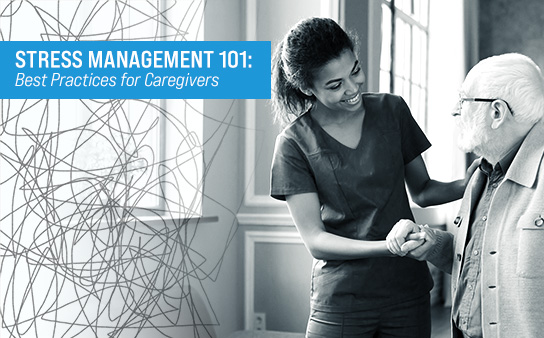
A long-term care professional’s day-to-day work is stressful. Combine the stressors of an ordinary year with COVID-19 uncertainties and resurgences, and it can be particularly difficult for many in the industry to cope. According to the National Institutes of Health, frontline workers are at an increased risk for burnout, a term coined to describe the psychological and emotional exhaustion and reduced motivation experienced by those exposed to chronic stress.1
Caring for residents with physical limitations and disabilities can have a profound impact on mental health, leading to staff turnover and unhealthy working environments. To combat these workplace stressors, experts suggest encouraging workplace collaboration, allotting time for workers to decompress, and improving schedules and boundaries so shifts are predictable and workers can build a healthier work-life balance.2 To improve employee well-being and preserve staff retention, the long-term care industry must take a holistic approach. Facilities should actively work to create safe spaces for employees to share their experiences, offer counseling services, educate staff about self-care, meditation and mindfulness, as well as the benefits of a healthy diet and sleep, and offer resources for management to support staff through a “servant-leadership” model.3
Worker and resident stress are inextricably linked, and managing both together is a careful balancing act. Studies have shown that stress and anxiety are often prevalent among seniors in long-term care settings and may be characterized by increased worrying, trouble concentrating, muscle tension, restlessness and fear — with the fear of falling cited as a uniquely geriatric anxiety.4
So, what can caregivers do to alleviate stress and create a more harmonious environment for the seniors in their care? Experts stress compassion above all: Residents should feel valued and heard, and that often involves expressing interest in their life stories, routines, preferences and favorite pastimes; research suggests that it takes a minimum of 30 days for new residents to feel comfortable, and extra effort on the part of the caregivers is key to building trust and reducing stress.5 Caregivers should be careful to use language that conveys a sense of security and comfort and consciously work to build friendships with residents, as well as the families who love them.6 Facilities that encourage mindful practices foster a symbiotic environment that lifts up residents and the noble professionals who care for them.
Sources:
1. www.ncbi.nlm.nih.gov/pmc/articles/PMC7604257
2. www.mariposatraining.com/blog-posts/stress-management-techniques-for-long-term-care-providers
3. www.mcknightsseniorliving.com/home/news/supporting-frontline-workers-key-to-resolving-senior-livings-burnout-crisis-data-show
4. www.anxiety.org/anxiety-in-long-term-care-facilities
5-6. www.socialworktoday.com/archive/011915p10.shtml
